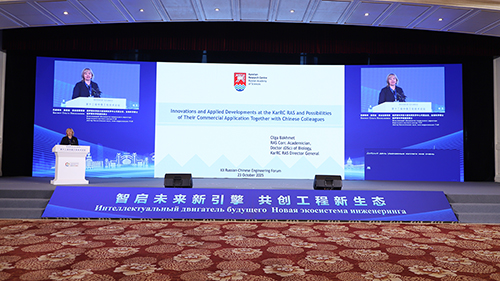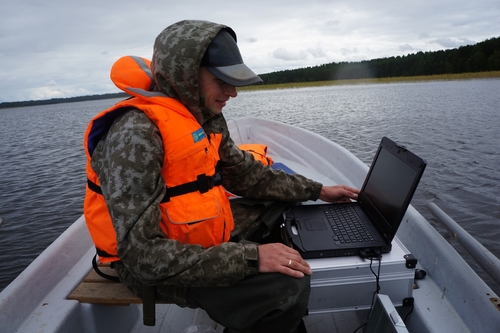– The republic’s protected areas are sanctuaries where forest reindeer habitats are protected. They provide the conditions necessary for the animals’ life, – explained the Research Leader, Senior Researcher at the Institute of Biology KarRC RAS Danila Panchenko.
During the fieldwork, the scientists collected biological samples from different parts of the nature reserve and the national park for subsequent genetic analysis. In the field, the researchers actually sighted representatives of this red-listed species.

Senior Researcher at the Institute of Biology KarRC RAS Danila Panchenko
The activities are implemented within a project supported by the Russian Science Foundation grant #24-24-00420 “Formation of the population genetic structure of rare ungulate mammal species under growing human impact: case study of the wild forest reindeer (Rangifer tarandus fennicus Lonnb.) in Northwest Russia”.
– The aim of our project is to investigate the specific genetic features of forest reindeer subpopulations in Karelia, including continuity issues. Previously, the species continuous distribution in Northwest Russia enabled an exchange of individuals between subpopulations, so that the genetic diversity was maintained. The animals’ ability to adapt to the environmental conditions and remain viable is largely predicated on this diversity, – tells Danila Panchenko.
However, the sharp decline of the wild forest reindeer population in the 1990s has led to a fragmentation of its distribution area in Northwest Russia. This may reduce the genetic diversity and undermine the resilience of individuals due to inbreeding - crossbreeding of closely related forms within the same population. At the same time, human activities continue to threaten reindeer subpopulations.
– Two of the main anthropogenic factors that currently affect the well-being of this rare animal in Karelia are poaching and forestry. Logging destroys the animals' keystone habitats, including the breeding and rutting grounds, as well as their seasonal migration routes. All of this has a negative impact on the interconnectedness of subpopulations. Studying their current degree of isolation is one of the main tasks of our project, – the scientist added.

Junior Researcher at Zoology Laboratory, Institute of Biology KarRC RAS, Anastasiia Kuznetsova
The timeframe of the research project is 2024-2025. It is expected to produce results of significance for advancing knowledge in the fields of general zoology, population genetics, and nature conservation. The data obtained will make it possible to assess at a new level the impact of human activities as one of the main factors in the processes of microevolution in the modern world, to design the actions needed to minimize the adverse human impact on the biodiversity of Northern European Russia and to develop new principles and methods for its monitoring, conservation and restoration.
Previously, researchers from the Zoology Laboratory of the Institute of Biology KarRC RAS Pyotr Danilov, Danila Panchenko, and Konstantin Tirronen authored the monograph “Reindeer of Eastern Fennoscandia”. Anyone interested can learn more about this rare animal species: the book is openly available via the following link.








